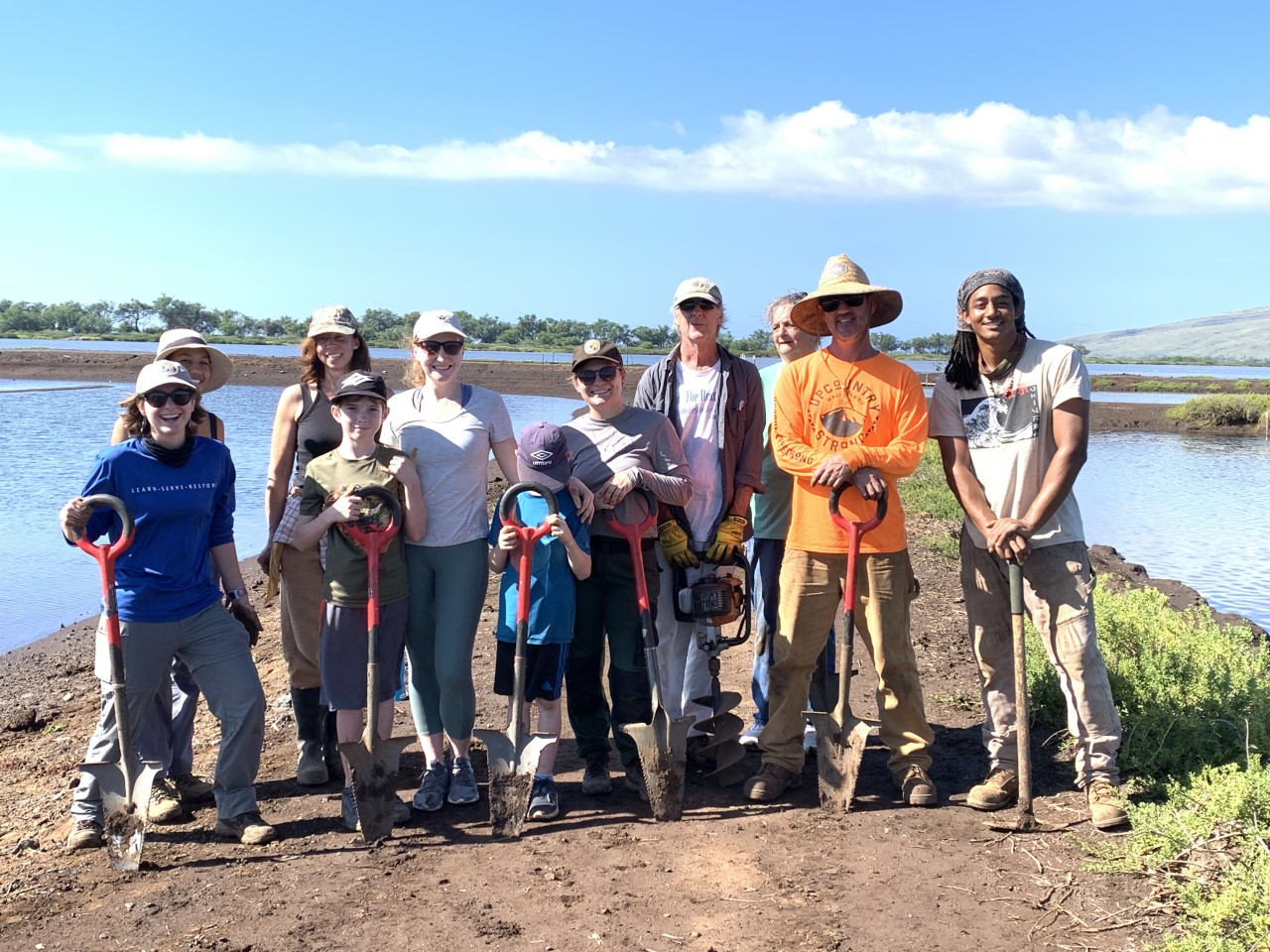This volunteer opportunity has been archived and is only visible for historical reference.
Outplanting Native Hawaiian Dryland Forest Ecosystem Plants
USFWS Keālia Pond National Wildlife Refuge

Keālia Pond National Wildlife Refuge is known for its native Hawaiian Stilt and Coot nesting habitat. But there are areas of the refuge unseen by the public eye that are being restored to a Hawaiian dryland forest ecosystem, one of the most rare systems in the world. Our objective is to plant species that were once found in this area and to replace the previously establish, and invasive, Kiawe forests. The area was previously burned in 2019 by a brush fire that tore across the valley towards Kīhei, narrowly missing our visitor center. The fire was a blessing in disguise as it gave us the opportunity to remove the Kiawe, replant our native species, and reintroduce an almost extinct ecosystem. Come join us in this unique opportunity!
Important Gear
- close toed shoes
- long pants
- sunscreen (if you have a personal preference, but it is provided otherwise)
- water
The area is slightly rugged as we are required to walk over mulched Kiawe. The fields of this mulch often times still have the long thorns of the Kiawe tree still in them and can cause harm if not properly equipped.
Please arrive on time or call ahead.
USFWS Keālia Pond National Wildlife Refuge
About the organizer
The National Wildlife Refuge System is a series of lands and waters owned and managed by the U.S. Fish and Wildlife Service. Wildlife conservation is at the heart of the refuge system. It drives everything we do from the purpose a refuge is established, to the recreational activities offered there, to the resource management tools we use. Selecting the right tools helps us ensure the survival of local plants and animals and helps fulfill the purpose of the refuge.
Outplanting Native Hawaiian Dryland Forest Ecosystem Plants
USFWS Keālia Pond National Wildlife Refuge

Keālia Pond National Wildlife Refuge is known for its native Hawaiian Stilt and Coot nesting habitat. But there are areas of the refuge unseen by the public eye that are being restored to a Hawaiian dryland forest ecosystem, one of the most rare systems in the world. Our objective is to plant species that were once found in this area and to replace the previously establish, and invasive, Kiawe forests. The area was previously burned in 2019 by a brush fire that tore across the valley towards Kīhei, narrowly missing our visitor center. The fire was a blessing in disguise as it gave us the opportunity to remove the Kiawe, replant our native species, and reintroduce an almost extinct ecosystem. Come join us in this unique opportunity!
Important Gear
- close toed shoes
- long pants
- sunscreen (if you have a personal preference, but it is provided otherwise)
- water
The area is slightly rugged as we are required to walk over mulched Kiawe. The fields of this mulch often times still have the long thorns of the Kiawe tree still in them and can cause harm if not properly equipped.
Please arrive on time or call ahead.
USFWS Keālia Pond National Wildlife Refuge
About the organizer
The National Wildlife Refuge System is a series of lands and waters owned and managed by the U.S. Fish and Wildlife Service. Wildlife conservation is at the heart of the refuge system. It drives everything we do from the purpose a refuge is established, to the recreational activities offered there, to the resource management tools we use. Selecting the right tools helps us ensure the survival of local plants and animals and helps fulfill the purpose of the refuge.
Sign Up
This volunteer opportunity has been archived and is not accepting new volunteers.
